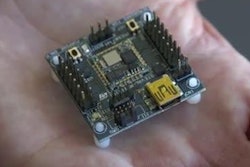The study, led by Dr. Jun Luo of Sichuan Provincial People's Hospital in China, included 730 patients with 742 lesions classified as BI-RADS 4 or 5 on ultrasound and mammography. Patients underwent contrast ultrasound before core-needle biopsy or surgical resection, and a revised BI-RADS classification was assigned based on six predictive models for CEUS of benign and malignant lesions. The group used receiver operating characteristic (ROC) analysis to evaluate the performance of CEUS, with pathology as reference criteria.
CEUS-based BI-RADS evaluation classified 35% of the lesions into category 3, 6% into category 4A, 4% into category 4B, 6% into category 4C, and 49% into category 5. Conventional ultrasound and mammography categorized 37% as 4A, 27% as 4B, 13% as 4C, and 23% as 5.
Using CEUS-based BI-RADS 3 as a cutoff measure, the technology had an accuracy rate for categorizing lesions of 80%, sensitivity of 98%, specificity of 70%, and positive predictive value of 98%. Contrast ultrasound's cancer-to-biopsy yield was 64% with CEUS-based BI-RADS 3 as the biopsy threshold, compared with 46% without this threshold, Luo and colleagues found.
In fact, only 2% of invasive cancers were misdiagnosed as BI-RADS 3, the researchers wrote. CEUS can improve BI-RADS categorization, leading to reduced biopsy rates and increased cancer-to-biopsy yield, they concluded.



















